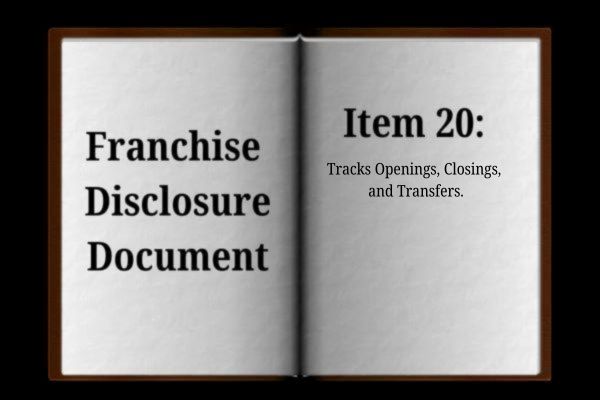Definition:
Item 20 shows franchise growth, closures, and transfers over the past three years. It helps you understand how the system is performing. You’ll see how many locations opened, closed, or changed hands. If you’re considering a CoolVu franchise, this section shows how stable and active the brand really is.
Use It in a Sentence:
Before joining a franchise, Jordan read Item 20 of the FDD to see how many locations had opened or closed recently.
Why Are Item 20 Details Important?
Item 20 in a Franchise Disclosure Document (FDD) gives you a snapshot of the franchise’s track record. This section lists how many outlets opened, closed, transferred, or were taken back by the franchisor in the past three years. You’ll see both franchised and company-owned locations.
This matters because it shows how stable the business really is. If you notice many stores opening and very few shutting down, that’s a sign of growth. But if closures outnumber new openings, it may raise questions. For instance, if you’re considering a CoolVu franchise for window films or custom wall graphics, this section shows how others are doing in the same system.
Item 20 helps you spot patterns. Are people staying with the brand? Are locations transferring hands often? These answers give you insight into the long-term potential. It’s not just about the number of stores, it’s about how well the system is working.

It also shows you how involved the franchisor is. Do they operate locations themselves, or do they rely only on franchisees? This can reveal how much skin they have in the game and how much support you might expect.
In short, Item 20 tells a story through numbers. It helps you understand if the franchise system is steady, growing, or struggling, and where CoolVu stands in that picture.
Related Dictionary Terms:
- Franchise Disclosure Document (FDD) – Legal summary.
- Item 1 in FDD: Identifies ownership, location, and business ties.
- Item 2 in FDD: Shows leadership experience behind the brand.
- Item 3 in FDD: Lists legal history and potential risks.
- Item 4 in FDD: Discloses past bankruptcies for review.
- Item 5 in FDD: Upfront startup fees listed.
- Item 6 in FDD: Lists ongoing fees for operating the franchise.
- Item 7 in FDD: Outlines estimated startup and operating costs.
- Item 8 in FDD: Lists supplier rules and product standards.
- Item 9 in FDD: Lists franchisee duties and responsibilities.
- Item 10 in FDD: Explains franchisor financing and loan options.
- Item 11 in FDD: Lists franchisor training, tools, and support.
- Item 12 in FDD: Explains territory rights and restrictions.
- Item 13 in FDD: Lists trademarks and legal protections.
- Item 14 in FDD: Covers patents, copyrights, proprietary info.
- Item 15 in FDD: Explains owner’s operational role.
- Item 16 in FDD: Lists what franchisees can sell.
- Item 17 in FDD: Renewal, transfer, & ending agreements rules.
- Item 18 in FDD: Shows public figures’ roles and ties.
- Item 19 in FDD: Shows sales numbers and earnings data.
- Item 21 in FDD: Shows audited financial statements.
- Item 22 in FDD: Lists all required franchise contracts.
- Item 23 in FDD: Confirms receipt and starts 14-day wait.










